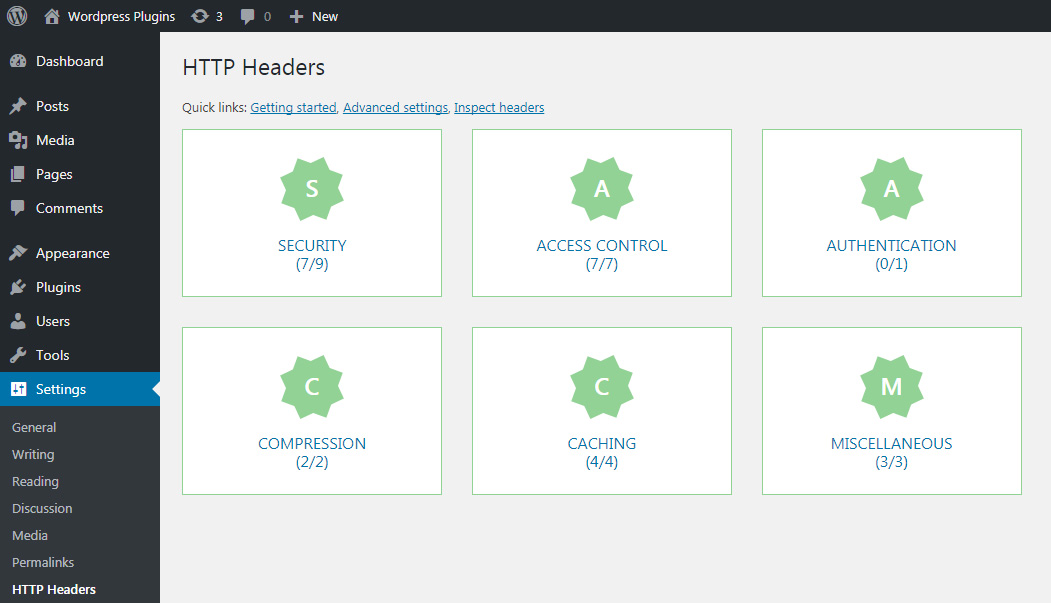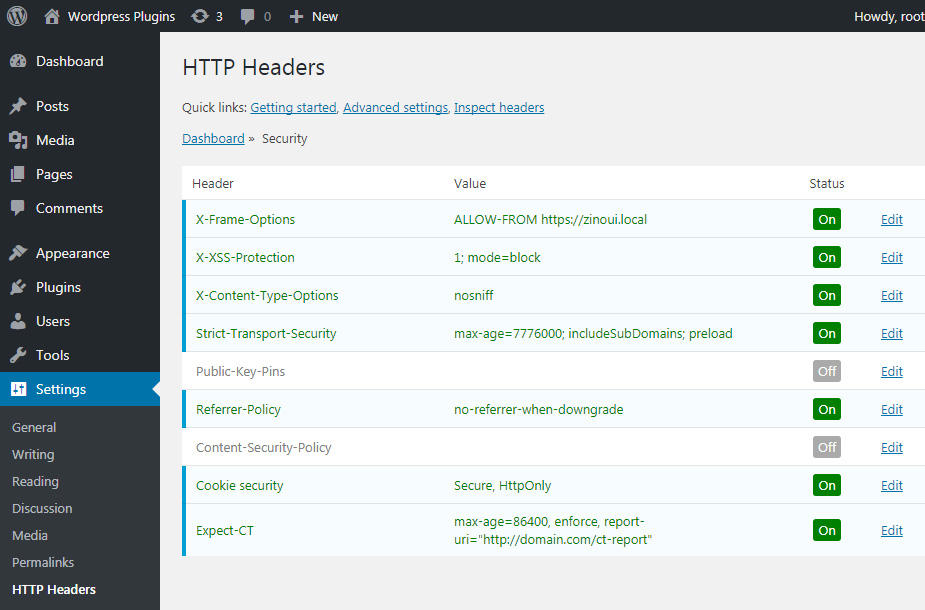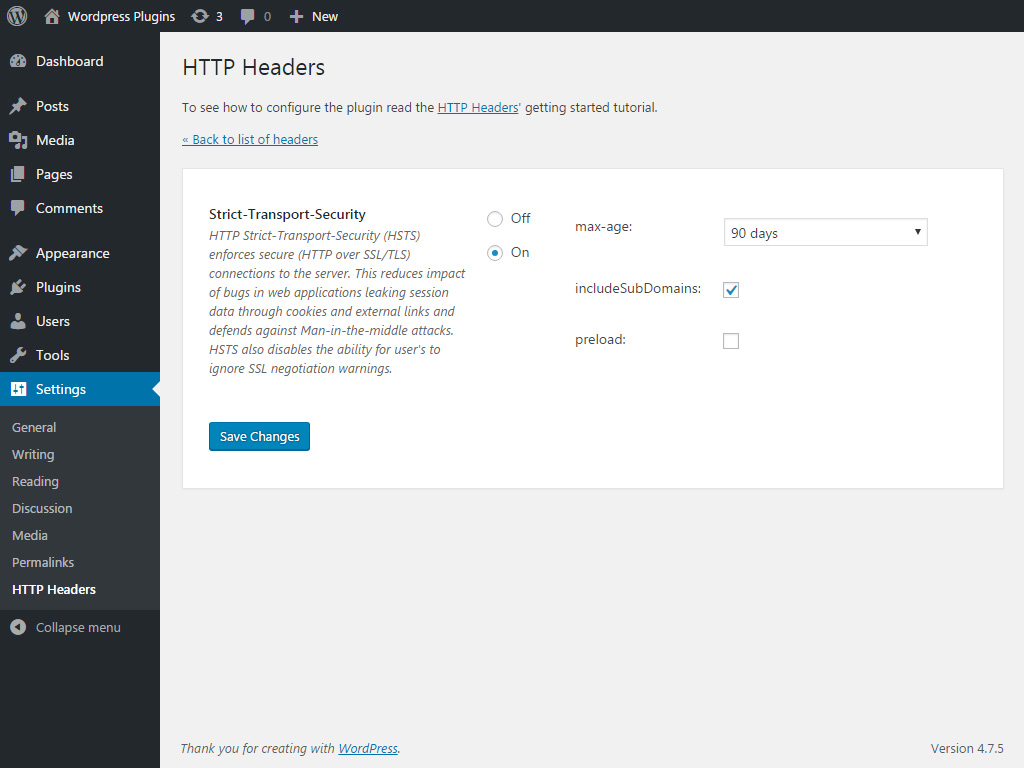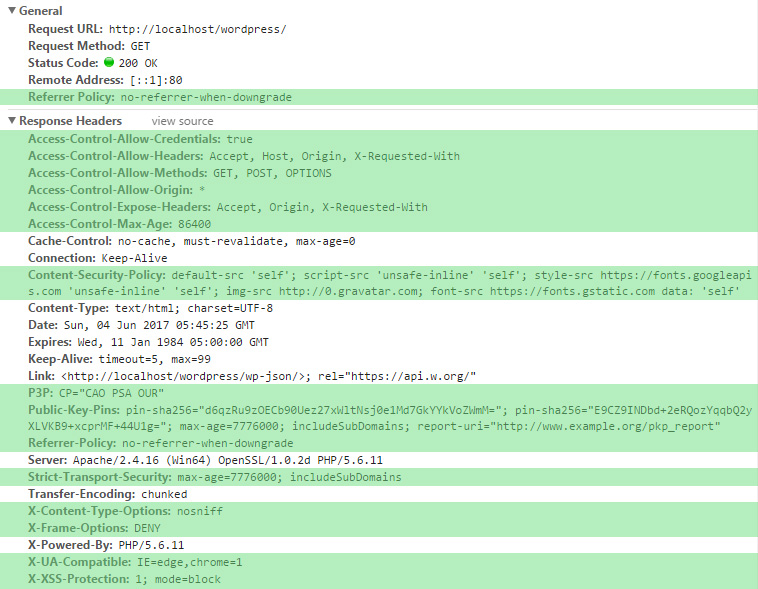HTTP Headers
HTTP Headers adds CORS & security HTTP headers to your website.





Overview
Compatibility
Installation instructions
Customer support & learning resources
Changelog
Main benefits
Control HTTP headers
Enhance security policies
Manage cross-origin requests
Optimize caching strategies
Customize content delivery
About this plugin
Categories: Security
Version: 1.19.1
Last updated: 02-09-2023
WordPress version: 3.2
Tested up to: 6.3.5
PHP version required: 5.3
Languages: Español de México, Français
Tags:
Overview
The HTTP Headers plugin for WordPress provides comprehensive control over the HTTP headers returned by your blog or website. This plugin enables users to manage a wide range of headers, including those related to access control, content security policies, caching, cross-origin policies, and more. By customizing headers such as Access-Control-Allow-Origin, Content-Security-Policy, Cache-Control, and Strict-Transport-Security, among others, users can enhance the security, performance, and compliance of their websites. This powerful tool ensures that you have the flexibility to optimize and secure your site's interactions and data transfers according to best practices and specific requirements.
Enhanced Security
- Supports Content-Security-Policy to prevent cross-site scripting attacks.
- Includes Strict-Transport-Security to enforce secure connections.
- Provides X-Frame-Options to protect against clickjacking.
- Offers X-XSS-Protection to mitigate cross-site scripting attacks.
Improved Performance
- Utilizes Cache-Control to manage caching policies.
- Supports Content-Encoding to compress data and reduce load times.
- Includes Age header to indicate the freshness of the resource.
- Provides Timing-Allow-Origin to measure server timing.
Enhanced Privacy
- Supports Referrer-Policy to control the amount of referrer information sent.
- Includes Permissions-Policy to manage permissions for APIs and features.
- Provides Clear-Site-Data to clear browsing data.
- Offers NEL (Network Error Logging) to report network errors.
Cross-Origin Resource Sharing (CORS) Control
- Supports Access-Control-Allow-Origin to specify allowed origins.
- Includes Access-Control-Allow-Credentials to control credential sharing.
- Provides Access-Control-Allow-Methods to specify allowed HTTP methods.
- Offers Access-Control-Allow-Headers to specify allowed headers.